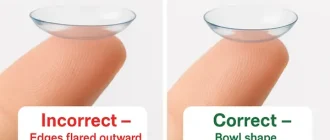While administering eye drops, it’s entirely normal to blink, primarily as an involuntary reflex since the eyes naturally react to incoming objects. Though it may decrease the full effectiveness of the eye drops, blinking doesn’t completely negate the drops’ positive effects.
Here’s some key information:
The Reflex to Blink
- The need to blink when a foreign object approaches the eyes, including eye drops, is an automatic protective reflex.
- Regular blinking is a part of the eye’s self-cleaning mechanism, aiding in moisturizing and removing dust from the eye surface.
The Effectiveness of Eye Drops
- Blinking does decrease the amount of eye drop solution that remains on the eye surface, as some of it may drain into the tear ducts. However, enough of the solution typically stays to achieve the intended effect.
The Technique to Minimize Blinking
- A technique to minimize blinking is to tilt the head back, pull the lower eyelid down, and try to focus on a point on the ceiling while administering the eye drop.
The After-effect of Blinking
- After applying eye drops, it is advisable to close the eyes gently without blinking for about 2 minutes. This allows the solution to evenly spread and increases its absorption.
Here’s a summarizing table:
| Factor | Review |
|---|---|
| The Reflex to Blink | Normal reflex to incoming foreign objects. |
| Effectiveness of Eye Drops | Remains effective despite some loss from blinking. |
| Technique To Minimize Blinking | Tilting head back, pulling eyelid down, focus on a point. |
| After-effect of Blinking | Increases absorption of the eye drop solution. |
In essence, blinking after administering eye drops is a natural reflex and doesn’t render the eye drops ineffective. However, to maximize absorption, one can adopt several techniques to minimize blinking and should keep the eyes closed post-application.





